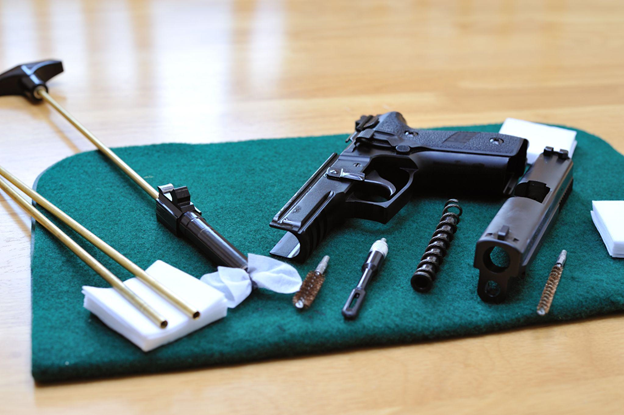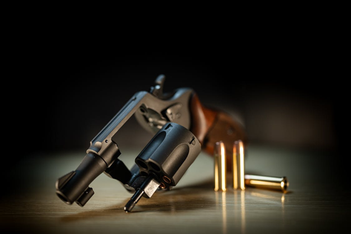6 Things You Probably Didn’t (but Should) Know About Cleaning a Gun
Jul 28th 2025
Got your gun cleaning kit ready to go? Good. You know what to do.
Or do you? Many gun owners around the country probably cling to myths of gun cleaning that are way off base - or just don’t know enough about firearm mechanics to clean a gun properly.
Better late than never. Make sure you take notes here.
Before We Get Started
The most important step in cleaning a gun, just as in handling a gun at all, is safety. Drop the magazine, open the action, and visually and physically inspect the chamber prior to disassembling the gun or attempting to clean it. Always perform this step before cleaning, and make certain never under any circumstances to muzzle anything you are not willing to destroy.
So, with that said, here are 6 things you didn’t know about cleaning a gun but probably should have.
1. Oil is not powder solvent.
Oil is a lubricant. It helps reduce the friction between sliding, rolling, or other moving parts of your gun. It is not a solvent, and it will not remove fouling or copper deposits - though it may soften powder fouling so that it can be removed.
The point is, you should not be over-oiling the bore of your gun, if you oil it at all. In fact, you shouldn’t even be using oil until you have thoroughly stripped and cleaned the gun of both powder and copper fouling - and lead fouling, if it is present.
Only after the gun has been cleaned and dried should you apply oil, and only then, only lightly to exposed metal surfaces and where moving parts are in contact with each other, such as along the bolt carrier group’s contact points or the rails of a shotgun’s action bars.
2. As little lubricant as necessary should be used.
As stated, after cleaning your gun you can lubricate it, and you should, but you should also use as little oil as possible. Liquid lubricant does lower the coefficient of friction between moving parts and thus it can reduce wear, but it also is sticky and will attract fouling, dust, dirt, and other particulate matter.
Therefore, using too much oil can conversely actually accelerate wear, if the gun is used under adverse conditions. Also, over-oiling a gun that has a wood stock can result in the stock absorbing excess oil, which can damage it.
3. WD-40 is not a lubricant.
While WD-40 is often used as a lubricant, a lubricant it is not. The “WD” in WD-40 stands for “water displacement,” and though the naming of the formula is a story for another time, what you need to know is that it is not only not a lubricant, it is not chemically intended to be used as one.
Rather, WD-40 is a water-displacer. If you use it as a lubricant it will eventually dry up and leave a residue that will not in any way lower the friction between moving parts.
And, while it can be used to protect against rust and corrosion (this actually is one of its intended uses) there are better, firearm-specific products for that application, like Hoppe’s MDL, or moisture-displacing lubricant, which kills two birds with one stone.
4. Most modern powders and primers are not corrosive.
It is well-known that black powder fouling is corrosive, and in the past some ammunition has been loaded with primers that left a corrosive fouling in the bore. If you shoot these and leave the fouling in your bore, you will have rust in there anywhere from a few hours to a few days. Humid conditions make this worse.
However, most modern primers and propellants are actually non-corrosive, so while it remains in your interest to keep the bore clean, you don’t need to rush home from the range or field to do it.
5. You should never clean a rifled bore from the muzzle end.
You should always clean a rifled bore from the chamber end, not the muzzle end. The reason for this is that incidental contact with the barrel’s muzzle crowning can damage it, thereby adversely affecting accuracy.

6. Powder solvent will not remove copper fouling.
There are powder solvents, and then there are copper solvents. They are not the same thing. Powder fouling is easy to see in the bore if you look in from the breech end with a bore light. Copper fouling, not so much.
The thing is, copper fouling, when excessive, can clog up the rifling and adversely affect accuracy, so from time to time you will want to remove it, and for that you will need a copper fouling solvent. Get one if your gun cleaning kit does not come with one.
Pick Up a Gun Cleaning Kit Here
Now that you know these best practices and tips for cleaning a gun, you can use your gun cleaning kit more effectively. Make sure you take note of them next time you return from the range and take your gun apart for a quick cleaning.

